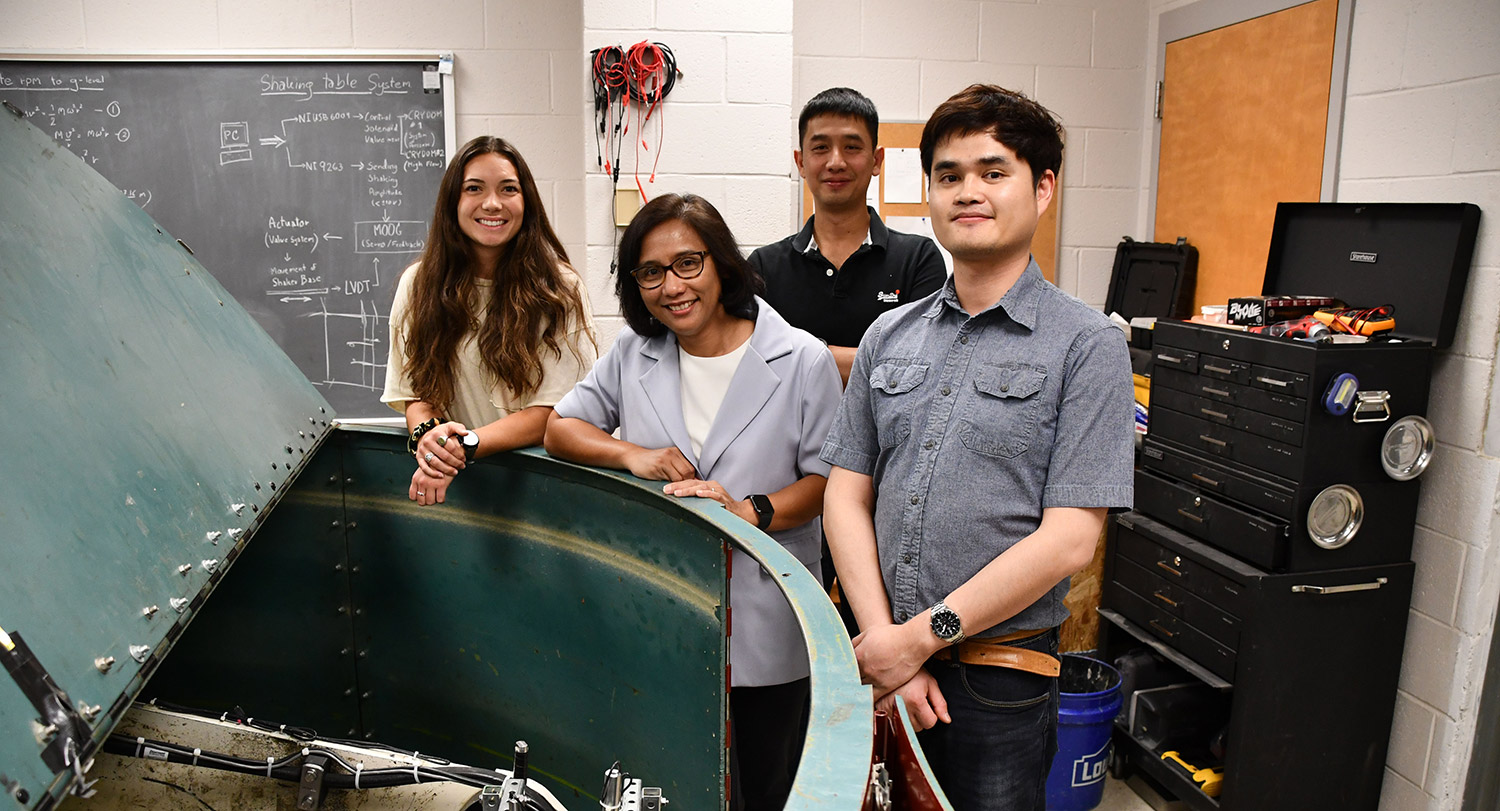
Juan Caicedo has firsthand experience with earthquakes. The current chair of the Department of Civil and Environmental Engineering was living in Colombia in 1983 when a magnitude 5.5 earthquake hit the city of Popayan, damaging approximately 14,000 buildings.
The tragedy motivated Colombia to pass new laws requiring earthquake-resistant building materials in high seismic areas; it also influenced Caicedo to study civil engineering and focus on structures.
But building earthquake-resistant structures is only part of the engineering strategy needed for making structures safer. The soil a structure sits on is considered even more important than the construction materials used, making it essential that engineers collaborate with other experts to ensure that structures in South Carolina are earthquake-resistant.
“It’s important for whoever is studying the soil to share information with the structural engineer because there’s a strong correlation between the two,” Caicedo says. “The geotechnical engineer needs to know the structure’s geometry and capacity of the soil. The better communication and feedback, the more sound the final design will be.”
The U.S. Geological Survey considers South Carolina as a potential high seismic area. An estimated magnitude 7.6 earthquake, the largest recorded on the East Coast of the U.S., struck near Charleston on Aug. 31, 1886. Today, all structures statewide must be constructed to earthquake seismic design specifications.
Associate Professor Inthuorn Sasanakul’s expertise is in geotechnical engineering, a sub-discipline focused on the behavior of soil and natural material in the ground. It also includes the study of dynamic loading, which is when any load changes over time and exerts force onto a structure that is greater than its resistance.
Geotechnical earthquake engineering takes into account soil, the design of a structure’s foundation and load dynamics. Since structures primarily collapse during earthquakes because of the type of soil below the foundation, Sasanakul’s work supports the required seismic design of critical infrastructure, such as roads, bridges and dams.
“We are dealing with uncertainties and complexities related to dynamic loads and natural materials, which makes geotechnical earthquake engineering complicated,” Sasanakul says.
Sasanakul’s research often focuses on dynamic behavior, which refers to how soil, foundations and structures behave and interact in an earthquake.
“We know that soft materials or loose sand that is fully saturated and under a dynamic or earthquake load has the potential to liquefy. Structures built on top of these materials could potentially collapse in an earthquake,” Sasanakul says.
This August, Caicedo and Sasanakul will begin a four-year, $1.5 million project to update and rewrite the South Carolina Department of Transportation’s seismic design manual for bridges. This includes how bridges and their components are designed and the soil and foundations that relate to geotechnical engineering.
“Instead of trying to develop new theories about earthquakes or new materials, we want to better understand earthquake engineering and the best practices for the state,” Caicedo says. “When the S.C. DOT starts calling for designs and new bridges, they can be economically feasible and be able to sustain the power of earthquakes.”
One challenge for geotechnical earthquake engineering in South Carolina is the lack of moderate or significant earthquakes each year. Unlike an earthquake-active state like California, this limits the amount of data available to understand dynamic loads.
It’s challenging when it’s not perfectly sand or gravel. This makes it tough for an engineer to assess if the material will behave like liquid or how it will react during an earthquake
Another issue is the varying geological features in each region. Deep and soft soil exists near the coast, which can cause soil liquefaction and a loss of strength. The Midlands has more rock outcrops closer to the surface, while the Upstate has a combination of rocks and mountains. More research and data are necessary for improving seismic design and to better understand the different types of soil and how their behavior differs based on geological features.
“The different soil profile is important for seismic design. We need to know how the earthquake load is actually spreading in the ground and coming up to the surface,” Sasanakul says.
Sasanakul’s research also explores the mixtures between sand and gravel in the soil. Since gravel may not liquify, the mixtures between the two materials are unknown.
“It’s challenging when it’s not perfectly sand or gravel. This makes it tough for an engineer to assess if the material will behave like liquid or how it will react during an earthquake,” Sasanakul says.
Sasanakul performs a variety of tests at the College of Engineering and Computing’s geotechnical centrifuge facility. Materials are placed in a closed centrifuge to simulate the large-scale model of structures and spun at 100 Gs to simulate the stress condition. She also uses an earthquake simulator that can shake and determine the behavior of a structural model.
“Before we assess whether the material will be affected or liquefy during an earthquake, we must perform an engineering characterization of dynamic soil properties. This testing measures the stiffness of the material to understand its strength,” Sasanakul says. “We are looking at the soil and a model of the structures because we’re interested in how the foundations interact with the soil.”
A recent increase in the number of minor earthquakes, especially in the Midlands region, motivated South Carolina to establish a chapter of the Earthquake Engineering Research Institute. Sasanakul hopes this will help bring together engineers, geologists, seismologists and others from related disciplines.
“Hopefully this will allow exchanging ideas and improving how we deal with earthquakes in the state,” Sasanakul says. “One of the first things I mentioned was that we need to have more data and seismic stations that collect earthquake data. This will allow my research to be multidisciplinary with seismologists and geologists.”
Caicedo adds that a collaborative effort is necessary for creating a statewide earthquake-resistant infrastructure.
“There’s a connection between geology and engineers,” Caicedo says. “While geologists study the structure of earth, the geotechnical engineer takes the information about the capacity of the soil and dynamic loading that feeds into a structure’s design.”